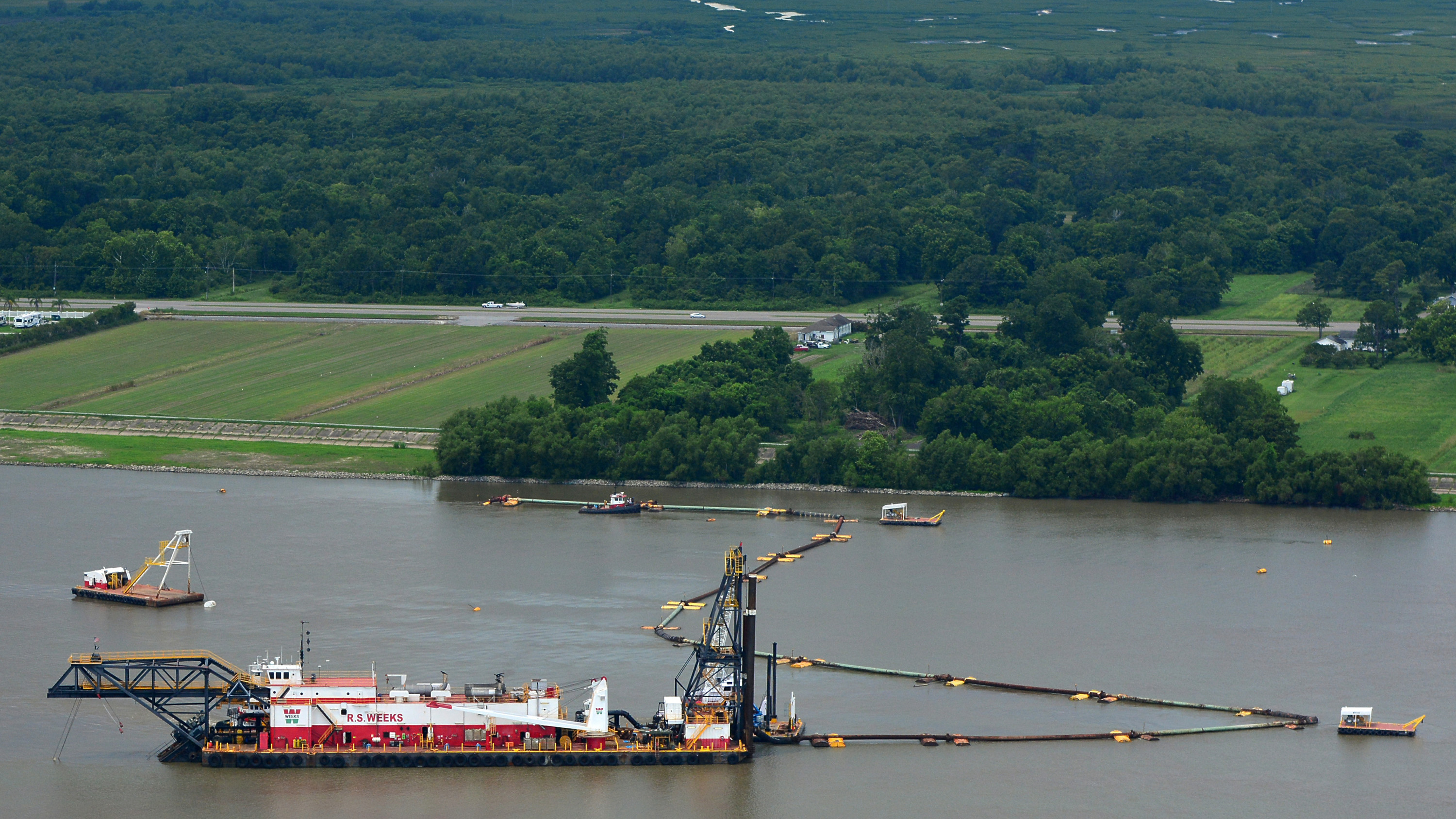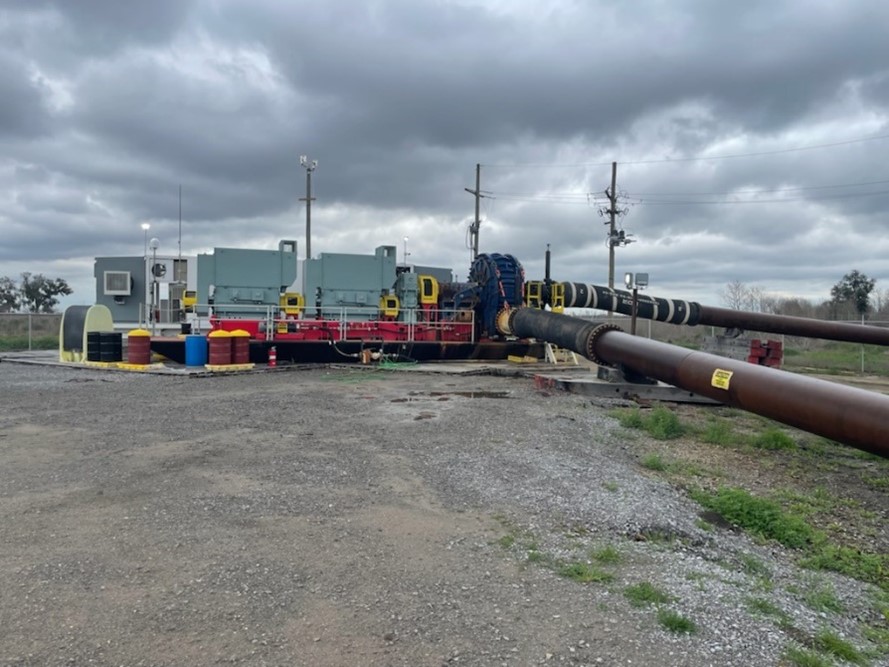Steps in Sustainability: Leveraging Electric Boosters in the Upper Barataria Basin

At Weeks Marine, we recognize the importance of sustainability as a business decision and as an obligation. Our vision is to create a culture of environmental and social responsibility while supporting the growth of our company and meeting the needs of our clients and industry.
“In our day-to-day operations, we focus on the safety of our workers and the well-being of the communities where we work while continuing to improve and find innovative ways to accomplish our clients’ goals,” said Margaret Wellins, Sustainability Program Manager at Weeks Marine.
At one of our key marsh creation projects in the Upper Barataria Basin, an approximately 1.5 million-acre wetland area containing hardwood forests, coastal marshes and freshwater wetlands, we had the opportunity to take major steps in our sustainability journey by leveraging electric boosters to move dredged sediment through over 10 miles of pipeline.
Electric boosters were first used in 2015 at a similar marsh creation project in Bayou Dupont, which was the basis for adopting a similar approach at the current project site.
Booster Basics
To pump material across such a long distance, boosters are needed at various points in the dredge pipeline. A booster is a pump placed along with the pipeline that operates separately from the dredge.
Material enters the booster at a lower pressure after traveling a distance, and the booster – as it’s aptly named – “boosts” the material back into the pipleline at high pressure to push the material further down the line.
“As dredge sediment pipeline lengths grow, boosters are the only way to ensure our material can get where it needs to go,” said Eric Price, Operations Manager in Weeks Marine’s Dredging Division. “Boosters are a vital piece of equipment in this industry, and wherever possible, we strive to utilize electric boosters instead of diesel-electric boosters to promote sustainable practices and operational efficiency.”
Electrifying Impacts
Until recently, boosters utilized by Weeks Marine have exclusively been diesel-powered. But the sheer size of the project area for both Bayou DuPont projects made it impractical and inefficient to haul diesel to the booster locations to refuel frequently.

Booster 2 on the Upper Bayou Dupont Project
The solution was to leverage an existing power line to power the boosters. In both projects, two electric boosters were utilized – the first placed three miles from the shoreline and the second was placed two miles from the first booster.
“Proper booster placement is key when planning and executing dredge work. Placing boosters too close together will damage the equipment, as the downstream booster will see too much intake pressure,” Price noted. “If boosters are too far apart, the velocity of the slurry will drop too much, causing the heavier sand material to settle out of the water, causing the line to clog.”
Using electric boosters meant a significant reduction in our CO2e emissions overall. Electric boosters produce zero direct (Scope 1) emissions.
By comparison, if a comparable traditional diesel booster runs 18 hours per day, it would emit approximately 37 metric tons of CO2e each day, which is equivalent to 8 gasoline-powered passenger vehicles driven for one year.* This measure was derived using the carbon calculator prepared by our Institute of Sustainability Study interns using the Green House Gas Protocol.
The use of electricity proved to be a cost-effective measure. Based on our energy bills, each booster uses over 1,500,000 kilowatt hours (kWh) of energy per month at a price of approximately $0.09 per kWh. According to the engine data sheets, 91,000 gallons of fuel would be required to generate the same amount of power. With the current price of diesel around $4.50 per gallon commercially, this equates to a cost saving of over $250,000.
In addition to the environmental and financial impacts, electric boosters require less manpower for maintenance and repairs. While the general upkeep is the same as a diesel-powered booster – fluids and oil for the motors and packing maintenance on an as-needed basis, they require fewer inspections because they can be monitored in real-time from the lever room on a dredge. Additionally, a stable and consistent power source that does not rely on fuel combustion is better for equipment and can prevent issues caused by inconsistent discharge pressure.
Sustainability-driven innovation is a core priority for Weeks; we remain committed to working cleaner, safer, and faster while driving sustainable growth. Leveraging electric boosters at the Bayou Dupont projects builds on our tradition of continual innovation.
*USEPA Greenhouse Gas Equivalencies Calculator. https://www.epa.gov/energy/greenhouse-gas-equivalencies-calculator (Accessed February 17, 2023)




